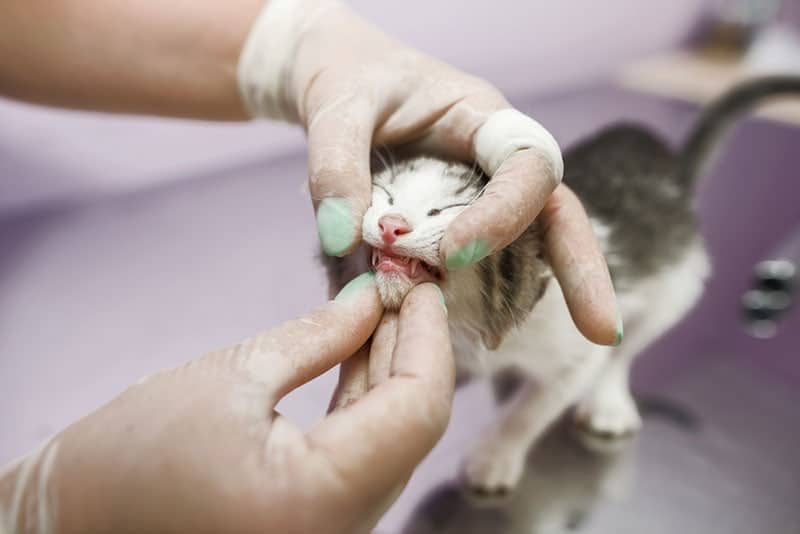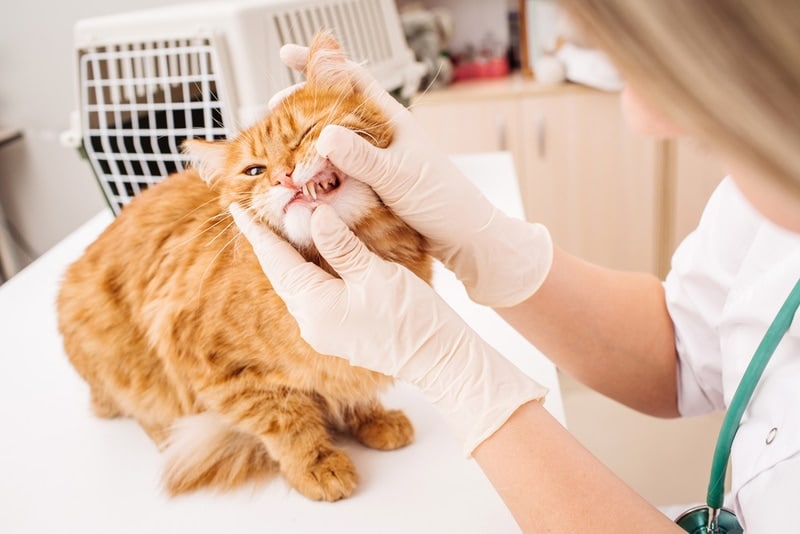My cat has been sneezing and wheezing when he is resting. He is eating and drinking normally and I have been giving him antibiotic shots for about two weeks but he doesn’t
seem to be improving.
My vet has said he has an inflamed gum and he recommends the removal of a canine tooth. However, Baxter is not experiencing pain on either side of his mouth, at least when I apply pressure.
I would really like to avoid the trauma of a tooth
removal. Should I get the vet to do x-rays of the nose
and mouth? Other suggestions?
Thanks, Diane and Baxter
Washington, DC

Our Vet Responds to Dental Disease in Cats
Several different problems can lead to sneezing and wheezing in cats. Sinus infections, allergies, viruses and foreign objects or growths in the nose are some of the most common culprits.
In Baxter’s case, I am wondering whether the inflamed tooth and the nasal symptoms may be related. The roots of the upper canine teeth lie very close to the nasal passages. If a canine tooth root becomes infected, it can cause a chronic sinus infection.
Although Baxter’s tooth does not seem to hurt him, inflamed or infected teeth and gums generally do cause pain. Some cats are very stoic, and do not show signs of dental pain. There is a chance that the tooth is hurting him even though he doesn’t act like it.
I think that taking X-rays of the tooth and the surrounding area is an excellent idea. X-rays will help to determine how severely damaged the tooth is, and whether it is contributing to Baxter’s wheezing and sneezing. This will help you and your vet make an informed decision about the extraction of the tooth.
Be aware that if the tooth is not playing a role in Baxter’s troubles, the path ahead could be frustrating. Diagnosing chronic sinus problems often involves complex and expensive tests such as CT scanning, rhinoscopy (using a special instrument to visually examine the interior areas of the nose and sinuses), and biopsy.
Feature Image Credit: PRESSLAB, Shutterstock







